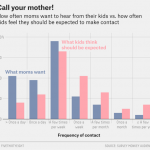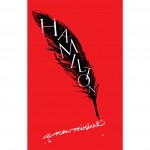A few weeks ago, I was visiting DC, and gosh darn it if this video for the a Game of Thrones-styled tour of DC landmarks doesn’t make me feel homesick all over again:
Meanwhile, very far from both Berkeley and DC: Two more of not-a-planet Pluto’s moons have been named.
On Tuesday the International Astronomical Union announced names for two of these moons, the fourth and fifth to be discovered. Moon No. 4 is now Kerberos, after the many-headed dog that guarded the entrance to the underworld in Greek mythology. Moon No. 5 is Styx, named for the river that souls had to cross over to get to Hades, or the underworld, and the goddess who ruled over it.
…Dr. Showalter, however, said he thought it would be more fun to throw it open to the public, and held an Internet contest in which people could vote for names for the moons. He was impressed, he said in an e-mail, by the amount of thinking and creativity that went into the suggestions.
“There were a lot of weird names,” he wrote. “A few suggested ‘Potato and Potahto,’ which I thought was pretty funny. Lots of children wrote in to suggest their siblings as ‘minions of Hades.’ ”
The favorite name turned out to be Vulcan, which is both the Greek god of fire and, perhaps more significantly, the home planet of Mr. Spock, the “Star Trek” character played by Leonard Nimoy. Dr. Showalter submitted the names Vulcan and Cerberus — which was later changed to the Greek spelling Kerberos to avoid confusion with an asteroid — to the Working Group for Planetary Nomenclature and the Committee on Small Body Nomenclature of International Astronomical Union.
If it’s useful for astronomers to be able to pull from variant spellings, I suggest that more astronomical be given names in Mandarin. That way we can choose from names in normal characters, pinyin, sin wenz, gwoyeu romatzyh, and other Romanizations that wikipedia didn’t see fit to mention.
Or we could use Russian diminutives: Alexei, Alyosha, Alyoshka, Alyoshenka, Alyoshechka, Alexeichik, Lyosha, Lyoshenka, and many more for all I know. (That would be enough to rename the planets in our solar system. I wouldn’t mind living on Alyoshka).
I keep recommending Destiny of the Republic: A Tale of Madness, Medicine and the Murder of a President to everyone (including you, dear reader). And I didn’t think I could love President Garfield any more. But then, io9 told me he came up with a visual proof of the Pythagorean Theorem. Squee!
Also from the annals of history, the Times had a fun story on a man who’s using 3D printing to bring historical inventions to life.
“You’re holding the 19th century by way of something that was produced in the 21st century,” said Mr. Galese, who finds in these objects a tangible link to the past. He’s also made a chopstick holder from the 1960s and a portable chess set from the 1940s…
After working as an attorney in patent litigation cases, Mr. Galese said he wishes more people saw the patent archives as a rich repository, flush with freely available designs. He sometimes refers to the patent office’s archives as the “original Thingiverse,” comparing it to the rapidly growing online library of design files shared by 3-D printing hobbyists today.
And while you are looking for fun ways to reappropriate history, you might like the sports-themed T-shirts from Amorphia Apparel’s History League line. Here’s an example:
Also in the Times, there was an extraordinary obituary of Nadezhda Popova, who was introduced with the following lede:
The Nazis called them “Night Witches” because the whooshing noise their plywood and canvas airplanes made reminded the Germans of the sound of a witch’s broomstick.
The Russian women who piloted those planes, onetime crop dusters, took it as a compliment. In 30,000 missions over four years, they dumped 23,000 tons of bombs on the German invaders, ultimately helping to chase them back to Berlin. Any German pilot who downed a “witch” was awarded an Iron Cross.
These young heroines, all volunteers and most in their teens and early 20s, became legends ofWorld War II but are now largely forgotten. Flying only in the dark, they had no parachutes, guns, radios or radar, only maps and compasses. If hit by tracer bullets, their planes would burn like sheets of paper.
Their uniforms were hand-me-downs from male pilots. Their faces froze in the open cockpits. Each night, the 40 or so two-woman crews flew 8 or more missions — sometimes as many as 18…
I really recommend reading the whole thing
Finally, the very very long running xkcd has come to an end (and Randall Monroe has given a bit of backstory on its creation). But what may be most delightful is that there’s now an intensive, crowdsourced effort to decipher the invented language some of the charaters spoke (the fans call it ‘Beanish’).
For more Quick Takes, visit Conversion Diary!













